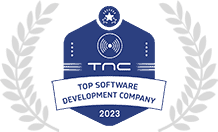In today’s fast-paced digital world, mobile applications are no longer just optional—they’re essential. With billions of smartphones in use globally, businesses of all sizes are recognizing the potential to reach a wider audience through mobile app development. This guide aims to provide a comprehensive overview of mobile app development, focusing on current trends, best practices, and practical insights for developers and businesses alike.
What is Mobile App Development?
Mobile app development involves creating software applications that run on mobile devices. These applications can be pre-installed on devices or delivered via web applications. Mobile apps can be broadly classified into three categories:
- Native Apps: Developed specifically for one platform (iOS or Android), utilizing platform-specific programming languages and tools.
- Hybrid Apps: A blend of native and web applications, these apps are built using web technologies and wrapped in a native shell, allowing them to run on multiple platforms.
- Web Apps: These are essentially websites optimized for mobile devices, accessed through browsers rather than being downloaded.
Understanding these distinctions is crucial for developers as it informs the choice of technology stack, user experience, and app performance.
Trends in Mobile App Development
As technology evolves, so do the trends in mobile app development. Staying informed about these trends is vital for developers aiming to create innovative and competitive applications. Here are some key trends:
- Cross-Platform Development: Frameworks like React Native have gained popularity, allowing developers to write code once and deploy it across multiple platforms. This approach saves time and resources, making it appealing for startups and established businesses alike.
- Artificial Intelligence (AI) and Machine Learning (ML): Integrating AI and ML into mobile apps enhances user experiences through personalization, predictive analytics, and automation. From chatbots to recommendation systems, the applications are endless.
- Internet of Things (IoT) Integration: The proliferation of smart devices creates opportunities for mobile apps to connect and control these devices, offering users seamless experiences.
- 5G Technology: The rollout of 5G networks promises faster data transfer and reduced latency, enabling developers to create more robust and feature-rich applications.
- Augmented Reality (AR) and Virtual Reality (VR): AR and VR are increasingly being integrated into mobile apps for immersive experiences. Applications in gaming, education, and retail are particularly noteworthy.
Best Practices for Mobile App Development
To ensure a successful mobile app, developers should adhere to several best practices:
- User-Centric Design: Focus on creating an intuitive user experience (UX). Conduct user research to understand your target audience and design interfaces that are easy to navigate. Use feedback loops to improve the app continuously.
- Performance Optimization: Apps must perform seamlessly on various devices and network conditions. Optimize loading times, reduce app size, and ensure responsiveness.
- Security Measures: Security should be a priority. Implement encryption, secure APIs, and regular security updates to protect user data and maintain trust.
- Testing and Quality Assurance: Rigorous testing is essential before launching an app. Utilize various testing methods—unit, integration, and user acceptance testing—to identify and resolve issues early.
- Regular Updates: Post-launch, regularly update the app with new features and improvements based on user feedback and changing trends.
The Role of React Native in Mobile App Development
React Native has revolutionized the way developers approach mobile app development. This open-source framework, maintained by Facebook, allows developers to build mobile apps using JavaScript and React, enabling them to create high-quality applications that perform well on both iOS and Android.
Advantages of Using React Native
- Cross-Platform Development: One of the biggest advantages is the ability to write code once and deploy it on multiple platforms, significantly reducing development time and costs.
- Hot Reloading: This feature allows developers to instantly see the results of the latest change in code, streamlining the development process and enhancing productivity.
- Rich Ecosystem and Community Support: With a vibrant community, React Native provides access to a wealth of libraries and tools, making it easier to implement complex features and solve issues quickly.
- Native Performance: React Native apps are nearly indistinguishable from native apps in terms of performance and look, thanks to its ability to leverage native components.
Understanding the Mobile App Development Lifecycle
The mobile app development lifecycle is a series of phases that guide the development process from idea conception to deployment. Understanding each phase helps ensure a smoother workflow.
- Idea and Conceptualization: This initial phase involves brainstorming and defining the app’s purpose, target audience, and key features.
- Market Research: Analyze competitors and gather user insights to refine your concept. This step helps identify unique selling points (USPs) and opportunities in the market.
- Design: Create wireframes and prototypes to visualize the app’s layout and flow. This phase focuses on user experience and interface design.
- Development: Here, developers write the code for the app. This stage can be further divided into front-end (client-side) and back-end (server-side) development.
- Testing: Conduct extensive testing to identify bugs and ensure the app performs as intended. Different testing methodologies are employed to cover all bases.
- Deployment: Once the app is tested and refined, it is ready for launch. Submit it to app stores and market it to your target audience.
- Post-Launch Maintenance: After the app is live, gather user feedback, fix any arising issues, and continue to update the app with new features.
Choosing the Right Technology Stack for Your App
Selecting an appropriate technology stack is critical for your app’s success. It influences the app’s performance, scalability, and security. Here’s a breakdown of essential components:
- Front-End Technologies: Frameworks and libraries like React Native and Flutter are popular for building engaging user interfaces. They provide tools to create responsive designs that work across devices.
- Back-End Technologies: Choose between server-side languages like Node.js, Python, or Ruby on Rails. Consider cloud services like AWS or Firebase for hosting and data management.
- Databases: Depending on your app’s requirements, choose from SQL (like PostgreSQL) or NoSQL (like MongoDB) databases to store user data effectively.
- APIs: APIs facilitate communication between the front-end and back-end. Consider using RESTful or GraphQL APIs based on your app’s needs.
- Development Tools: Utilize version control systems like Git, CI/CD tools for automation, and collaboration platforms to streamline the development process.
The Importance of User Experience (UX) in Mobile Apps
User experience (UX) plays a pivotal role in the success of mobile applications. A well-designed app keeps users engaged and encourages retention. Here are some strategies to enhance UX:
- Simplified Navigation: Ensure users can navigate through the app effortlessly. Use clear menus and intuitive icons.
- Consistent Design Language: Maintain consistency in colors, fonts, and elements throughout the app to create a cohesive experience.
- Feedback Mechanisms: Incorporate feedback options so users can report issues or suggest improvements. This helps in maintaining user satisfaction.
- Accessibility: Ensure your app is accessible to all users, including those with disabilities. Implement features like voice commands and screen readers.
- Onboarding Experience: Create a seamless onboarding process that guides new users through the app’s features and functionalities.
Monetization Strategies for Mobile Apps
Monetizing your app is crucial for its sustainability and profitability. Here are several common monetization strategies:
- In-App Purchases: Offer additional features or content for a fee. This is especially popular in gaming apps.
- Freemium Model: Provide a free version of your app with limited features, allowing users to upgrade to a premium version for additional functionalities.
- Advertisements: Incorporate ads within your app to generate revenue. Use ad networks like Google AdMob to manage this process.
- Subscription Model: Charge users a recurring fee to access premium content or features. This model works well for services and content-based apps.
- Sponsorships and Partnerships: Collaborate with brands to offer sponsored content or services within your app.
Challenges in Mobile App Development
Despite the advancements in technology, mobile app development comes with its set of challenges. Understanding these hurdles can help developers prepare and strategize effectively.
- Fragmentation: With multiple devices and operating systems, ensuring compatibility across all platforms can be a daunting task.
- Performance Issues: Users expect apps to perform flawlessly. Issues like slow loading times or crashes can lead to poor user experiences.
- Security Concerns: With increasing cyber threats, developers must prioritize security to protect user data.
- User Retention: Keeping users engaged is a continuous challenge. Regular updates and enhancements are crucial to maintain interest.
- Rapid Technological Changes: The tech landscape is ever-evolving, making it essential for developers to stay updated with the latest trends and technologies.
Future of Mobile App Development
Looking ahead, the future of mobile app development promises exciting possibilities:
- Increased Use of AI: As AI technology continues to advance, its integration into mobile apps will enhance personalization and improve user experiences.
- Voice and Gesture Controls: Voice and gesture controls are becoming more prevalent, offering users intuitive ways to interact with their devices.
- Wearable Technology: As wearables gain popularity, apps designed specifically for these devices will become more common, creating a seamless user experience.
- Sustainability Considerations: As awareness of environmental issues grows, developers will need to consider sustainable practices in their development processes.
- Enhanced AR and VR Experiences: As AR and VR technologies mature, expect more immersive experiences in mobile applications across various sectors.
Conclusion
Mobile app development is an ever-changing landscape that demands creativity, adaptability, and a user-centric approach. By staying informed about the latest trends, adhering to best practices, and embracing innovative technologies like React Native, developers can create impactful mobile applications that resonate with users and stand out in the market.
FAQs
- What is mobile app development?
Mobile app development is the process of creating software applications that run on mobile devices. - What are the different types of mobile apps?
Mobile apps can be classified into native, hybrid, and web apps. - What are the advantages of using React Native?
React Native allows for cross-platform development, offers hot reloading, and provides native performance. - How important is user experience in mobile apps?
A good user experience is crucial for user engagement and retention. - What are some popular monetization strategies for mobile apps?
Common strategies include in-app purchases, freemium models, advertisements, and subscriptions. - What challenges do developers face in mobile app development?
Developers face challenges such as fragmentation, performance issues, and security concerns. - How can I ensure my app is secure?
Implement encryption, secure APIs, and regular security updates to protect user data. - What is the role of AI in mobile app development?
AI enhances personalization, predictive analytics, and automation within apps. - How can I improve my app’s performance?
Optimize loading times, reduce app size, and ensure responsiveness. - What is the mobile app development lifecycle?
The lifecycle includes phases like idea conception, market research, design, development, testing, deployment, and maintenance. - What tools can I use for mobile app development?
Popular tools include React Native, Flutter, and various cloud services. - What factors should I consider when choosing a technology stack?
Consider front-end and back-end technologies, databases, APIs, and development tools. - What is the significance of regular app updates?
Regular updates help address bugs, introduce new features, and improve user satisfaction. - How do I gather user feedback for my app?
Incorporate feedback mechanisms like surveys and ratings to collect user insights. - What is the importance of market research in app development?
Market research helps identify competitors, user needs, and unique selling points. - How can I enhance the onboarding experience for my app?
Create a guided tutorial or walkthrough to help new users understand your app’s features. - What are some effective strategies for user retention?
Regularly update your app, engage with users through notifications, and offer loyalty rewards. - How does 5G technology impact mobile app development?
5G enables faster data transfer and reduced latency, allowing for more robust app features. - What role does cloud computing play in mobile app development?
Cloud computing provides scalable resources for hosting, storage, and data management. - How can I keep up with mobile app development trends?
Stay updated through industry blogs, attend conferences, and participate in developer communities.
- How to Join Two Strings in Flutter - January 2, 2025
- How to Add Icon in Flutter - January 2, 2025
- How to do Facebook Login in Flutter - January 2, 2025




















